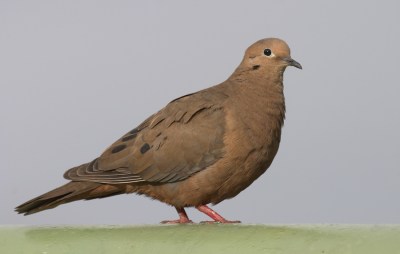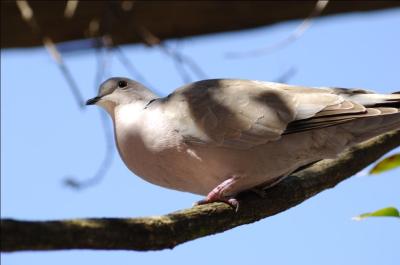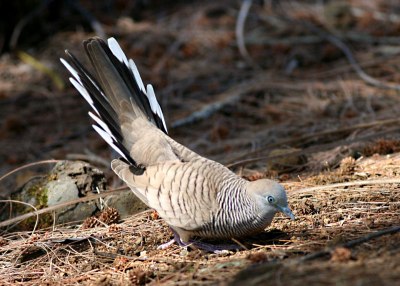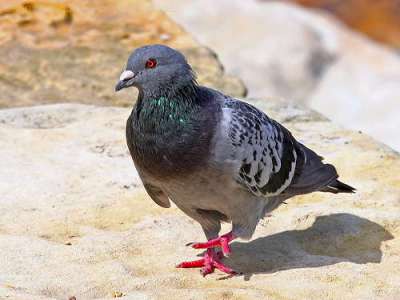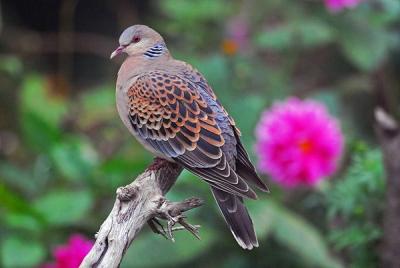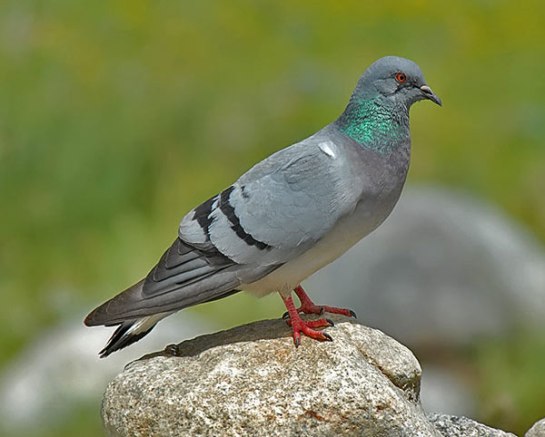When Stephen, at our church, asked me to write about 10 (+ or -) things we are thankful for on our church blog, I am sure he knew that I would write about the birds. Here is what I am posting on that blog.
How can we be thankful for the birds?

White-winged Scoter (Melanitta deglandi) by Ray
So God created the great sea creatures and every living creature that moves, with which the waters swarm, according to their kinds, and every winged bird according to its kind. And God saw that it was good. (Genesis 1:21 ESV)
I am thankful for a Creator God, the Lord, who made not only the birds, but all of us as well. “Know ye that the LORD he is God: it is he that hath made us, and not we ourselves; we are his people, and the sheep of his pasture. ” (Psa 100:3)

Channel-billed Toucan (Ramphastos vitellinus) by Ian
Now out of the ground the LORD God had formed every beast of the field and every bird of the heavens and brought them to the man to see what he would call them. And whatever the man called every living creature, that was its name. (Genesis 2:19 ESV)
I am thankful that the LORD God gave Adam the privilege and the knowledge to name the birds. We were created with intellect and didn’t have to progress up through evolution to finally get “smart enough” to name the birds. Adam wasn’t even a week old.
The fear of you and the dread of you shall be upon every beast of the earth and upon every bird of the heavens, upon everything that creeps on the ground and all the fish of the sea. Into your hand they are delivered. Every moving thing that lives shall be food for you. And as I gave you the green plants, I give you everything. (Genesis 9:2-3 ESV)

Wild Turkey (Meleagris gallopavo) by Daves BirdingPix
I am thankful for the food the Lord has allowed us to eat. Many of us will be eating Turkey this Thanksgiving Day. (Even if it is sometimes sad to think about.)
I know all the birds of the hills, and all that moves in the field is mine. (Psalms 50:11 ESV)
I am thankful that just as God knows all the birds, He knows us. “Because he hath set his love upon me, therefore will I deliver him: I will set him on high, because he hath known my name.” (Psalms 91:14 KJV)

Greater Painted Snipe (Rostratula benghalensis) by W Kwong
Therefore I tell you, do not be anxious about your life, what you will eat or what you will drink, nor about your body, what you will put on. Is not life more than food, and the body more than clothing? Look at the birds of the air: they neither sow nor reap nor gather into barns, and yet your heavenly Father feeds them. Are you not of more value than they? And which of you by being anxious can add a single hour to his span of life? And why are you anxious about clothing? Consider the lilies of the field, how they grow: they neither toil nor spin, (Matthew 6:25-28 ESV)

Chihuahuan Raven (Corvus cryptoleucus)Raven (Corvus corax) by Kent Nickell
For life is more than food, and the body more than clothing. Consider the ravens: they neither sow nor reap, they have neither storehouse nor barn, and yet God feeds them. Of how much more value are you than the birds! And which of you by being anxious can add a single hour to his span of life? If then you are not able to do as small a thing as that, why are you anxious about the rest? (Luke 12:23-26 ESV)

Three Sparrows
Are not two sparrows sold for a penny? And not one of them will fall to the ground apart from your Father. But even the hairs of your head are all numbered. Fear not, therefore; you are of more value than many sparrows.
(Matthew 10:29-31 ESV)
I am thankful for these three parallel verses that remind us that God cares about not only every need of the birds, but also for ours. We are more valuable than them and He provides everything for them and knows all about them. Why do we need to be anxious?

Common Starling (Sturnus vulgaris) at Nest by Anthony747
And Jesus said to him, “Foxes have holes, and birds of the air have nests, but the Son of Man has nowhere to lay his head.” (Matthew 8:20 ESV)
I am very thankful that the Lord Jesus Christ, became my Savior.
Who, being in the form of God, thought it not robbery to be equal with God: But made himself of no reputation, and took upon him the form of a servant, and was made in the likeness of men: And being found in fashion as a man, he humbled himself, and became obedient unto death, even the death of the cross. (Philippians 2:6-8 KJV)

Crested Partridge (Rollulus rouloul) at National Aviary by Lee
The heart is deceitful above all things, and desperately wicked: who can know it? I the LORD search the heart, I try the reins, even to give every man according to his ways, and according to the fruit of his doings. As the partridge sitteth on eggs, and hatcheth them not; so he that getteth riches, and not by right, shall leave them in the midst of his days, and at his end shall be a fool. (Jeremiah 17:9-11 KJV)
I am thankful for the partridge that reminds me not to seek earthly riches unjustly.

Bald Eagle flying by Dave’s BirdingPix
Have you not known? Have you not heard? The LORD is the everlasting God, the Creator of the ends of the earth. He does not faint or grow weary; his understanding is unsearchable. He gives power to the faint, and to him who has no might he increases strength. Even youths shall faint and be weary, and young men shall fall exhausted; but they who wait for the LORD shall renew their strength; they shall mount up with wings like eagles; they shall run and not be weary; they shall walk and not faint. (Isaiah 40:28-31 ESV)
I am thankful for the wings of the Eagle to remind me of all the promises in this passage. Our God is the everlasting God, doesn’t faint or grow weary, omniscient, omnipotent, omnipresent and the Creator. Awesome!

Oriental Turtle Dove (Streptopelia orientalis) by Nikhil
But if he cannot afford two turtledoves or two pigeons, then he shall bring as his offering for the sin that he has committed a tenth of an ephah of fine flour for a sin offering. He shall put no oil on it and shall put no frankincense on it, for it is a sin offering. (Leviticus 5:11 ESV)
I am thankful for doves and pigeons because they remind me that in the Old Testament they were innocently sacrificed for a person’s sin. That was looking forward to the death of Christ on the cross. I am thankful for my salvation in Jesus Christ.
We know that Christ, being raised from the dead, will never die again; death no longer has dominion over him. For the death he died he died to sin, once for all, but the life he lives he lives to God. (Romans 6:9-10 ESV)
My little children, these things write I unto you, that ye sin not. And if any man sin, we have an advocate with the Father, Jesus Christ the righteous: And he is the propitiation for our sins: and not for ours only, but also for the sins of the whole world. (1 John 2:1-2 KJV)
Beloved, let us love one another: for love is of God; and every one that loveth is born of God, and knoweth God. He that loveth not knoweth not God; for God is love. In this was manifested the love of God toward us, because that God sent his only begotten Son into the world, that we might live through him. Herein is love, not that we loved God, but that he loved us, and sent his Son to be the propitiation for our sins. Beloved, if God so loved us, we ought also to love one another.
(1 John 4:7-11 KJV)
The Gospel Message
*



